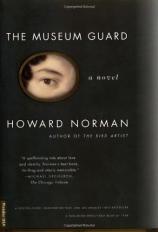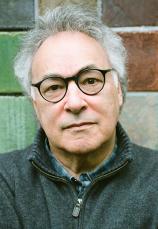Reading Group Guide
Discussion Questions
The Museum Guard

1. Howard Norman says that in The Museum Guard, “I wanted to make the background come alive as much as the foreground.” This novel also represents his deepest involvement in real history. How does the historical background contribute to the novel? What do events in the novel imply about the importance of art in the context of war?
2. Although DeFoe considers himself unschooled, he nonetheless has strong feelings about the paintings. He despises Sunday Flower Market, whereas Jewess on the Street in Amsterdam affects him so deeply that he goes into the custodian’s room to splash cold water on his face, and he even says he wishes he were Joop Heijman. Imogen, of course, takes a similar wish to the extreme. What role does art play in the everyday lives of characters in The Museum Guard? How does art affect their identity?
3. Mr. Connaught tells DeFoe, “Being a museum guard requires personal restraint.” DeFoe’s function as a guard is to ensure that others maintain personal restraint as well. Further, Howard Norman describes DeFoe as a “passive hero.” In what ways do restraint and passivity, as opposed to action, play into the larger themes of the novel?
4. Howard Norman has spent considerable time immersed in arctic culture as a folklorist, translator, and screenwriter. In what ways does Norman’s experience seem to contribute to the texture and style of The Museum Guard?
5. Howard Norman says, “I do not especially admire novels in which coincidence is the one organizing principle. I am most deeply and persistently drawn in to a story where fate propels events forward, at whatever pace.” In what ways does a sense of fate seem to propel events in The Museum Guard?
6. Vicariousness, says Howard Norman, is vital to him as a novelist. “In one way or another, I have to have the desire to be the characters I am writing.” In what ways is vicariousness also applicable to the characters’ lives in The Museum Guard? By contrast, what characters are not living vicariously?
7. The “soul’s estrangement and reconciliation” is a recurrent phrase in the novel. What are some possible interpretations of this phrase?
8. As in The Bird Artist, The Museum Guard opens with a confession. We know from the first sentence that DeFoe will eventually steal Jewess on a Street in Amsterdam for Imogen. What effect does this confession have on the plot, and on the way we think about DeFoe?
9. DeFoe and Edward could hardly be more contrasting characters. Despite their differences, what bonds them? In what ways might they learn from or influence each other?
10. In traveling to Amsterdam, Mr. Connaught and Imogen are going against the flow of traffic leaving Europe. Why is the actual result of their trip so different from their intent? Is Joop Heijman’s hatred justified?
11. There are many intimate couples in The Museum Guard, but few are married. In fact, the one married couple among them, Edward and Altoon, is permanently estranged. What commentary about marriage might be inferred from the conditions of intimacy in The Museum Guard? What might be the reasons underlying such seeming failure of marriage?
12. When the novel ends, Imogen Linny’s fate is unknown. What is the effect of such an uncertainty?
The Museum Guard
- Publication Date: September 24, 1999
- Paperback: 320 pages
- Publisher: Picador
- ISBN-10: 0312204272
- ISBN-13: 9780312204273







